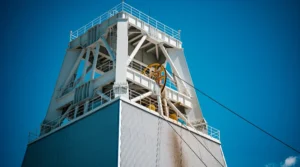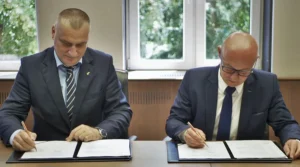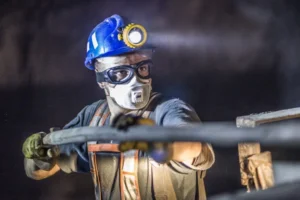What goes in Poland on 9th of June.
US LNG in Świnoujście
The Clean Ocean LNG tanker, which carried the first US LNG delivery to Poland anchored at the Lech Kaczyński LNG Terminal in Świnoujście. The Polish Prime Minister, politicians and representatives of state companies, as well as journalists, welcomed the tanker that arrived from the Sabine Pass terminal in Louisiana, USA. The vessel reached the terminal’s roadstead on Wednesday. The tanker, which is 298 m long and 46 m wide left the US harbor on 22 May.
The unloading of the ship may take 24 hours. The liquefied natural gas will be re-gasified, i.e. it will be heated to return to its original – gaseous – state.
This process takes place in special installations, the so-called evaporators. Once the fuel is re-gassed it will enter the Polish gas transmission network.
„The contract for the delivery of US LNG to the Świnoujście terminal is groundbreaking. For the first time in history, US gas is competitive in this part of Europe,” assessed Michał Kurtyka, Vice-Minister of Energy.
Piotr Naimski, Secretary of State at the Chancellery of the Prime Minister and Government Plenipotentiary for Strategic Energy Infrastructure, said the delivery of US LNG to Poland was a „milestone” in Polish efforts to diversify energy sources.
At the same time, Naimski stated that Poland was still „almost entirely dependent on natural gas imports from Gazprom.” In his opinion, after constructing the LNG terminal in Świnoujście, Poland has „found itself at a turning point, on the verge of success.”
International Maritime Congress in Szczecin
The International Maritime Congress in Szczecin has begun. One of its topics will be the development of inland shipping in Poland.
Global Compact Poland is preparing reports on making Polish rivers passable. One of the successes of the Polish administration is the ratification and adoption of the European Agreement on Main Inland Waterways of International Importance (AGN). According to Kamil Wyszkowski, Global Compact Poland General Director, this may bring an end to the decades-long negligence of inland shipping on the Oder and Vistula rivers.
Wyszkowski also reminded that Warsaw applied for funds for river investments, including money from the so-called Juncker Plan. According to the European Investment Bank, the flood control project of the lower section of the Vistula river up to Włocławek is worth PLN 3.5 billion. In the last quarter of the year, the EIB will asses, among others, the project to build 92 kilometers of the Silesian Channel that will connect the Vistula with the Oder, which is worth ca. PLN 11 billion, as well as the construction of a cascade on a section of the Oder from Brzeg Dolny to the mouth of the Nysa Łużycka river, also worth PLN 11 billion.
Sejm on the Swiss Franc acts
Immediately after the voting at the Sejm is concluded, a special Sejm sub-committee will convene to deal with three bill proposals on helping people who took out loans in Swiss Francs. One prepared by the president, the other by Civic Platform and the third one by Kukiz ’15. This is the first seating since April when members of the special sub-committee, asked state institutions for additional information to help them decide, which project was worthwhile. Not that long ago, Jacek Sasin, PiS MP, stated that one of the projects could be adopted even before the Sejm’s summer recess.
More e-buses
An increasing number of towns is opening tenders for purchases of electric buses. By 2020 there will be 800 electric buses in Poland.
„According to the Polish Development Fund, up till now 45 towns and communes applied to participate in the so-called E-bus program. The applicants use around 5.5 thousand buses, i.e. almost half of such vehicles in Poland,” writes the Puls Biznesu daily.
According to a report by ZDG TOR entitled „Electromobility in Poland. Perspectives of development, opportunities and risks,” the purchasing declarations range from a few vehicles in rural communities and small towns to up to 120 in Warsaw.








